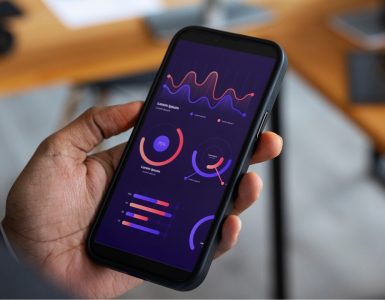In the current era where remote work and digital collaboration have become the norm, the demand for real-time collaboration tools has surged significantly. These tools, which include features like live editing of documents and real-time messaging, have become indispensable in facilitating seamless collaboration among teams spread across different geographies. In this blog, we aims to dive into the integration of these essential features into full stack applications, providing developers with a roadmap to enhance the collaborative capabilities of their applications.
What are Real-time Collaboration Tools?
Real-time collaboration tools enable individuals to work together and share information instantaneously, regardless of their physical location. These tools encompass a wide range of functionalities, from document editing and project management to instant messaging and video conferencing. Examples like Google Docs allow multiple users to edit a document simultaneously, while platforms like Slack facilitate instant communication among team members.
The core value of real-time collaboration tools lies in their ability to enhance productivity, streamline communication, and foster a sense of teamwork and unity among remote participants. By breaking down the barriers of distance and time, they enable a more dynamic and interactive way of working together.
Architectural Overview for Implementing Real-time Features
At the heart of any real-time application is the need for a robust and efficient mechanism for bi-directional communication between the client and server. Traditional HTTP requests, which follow a request-response pattern, are not suited for real-time interactions. This is where technologies like WebSockets and HTTP/2 come into play, providing an open connection that allows for the continuous flow of data in both directions.
WebSockets for Real-time Bi-directional Communication
WebSockets provide a full-duplex communication channel over a single, long-lived connection, making them ideal for real-time features. Here’s a basic example of setting up a WebSocket server in Node.js:
javascript
const WebSocket = require(‘ws’);
const wss = new WebSocket.Server({ port: 8080 });
wss.on(‘connection’, function connection(ws) {
ws.on(‘message’, function incoming(message) {
console.log(‘received: %s’, message);
// Broadcasting message to all connected clients
wss.clients.forEach(function each(client) {
if (client.readyState === WebSocket.OPEN) {
client.send(message);
}
});
});
ws.send(‘Welcome to the real-time collaboration tool!’);
});
This server listens for incoming WebSocket connections and broadcasts any received messages to all connected clients, facilitating a basic real-time messaging system.
Implementing Live Editing Features
Live editing is one of the most compelling features of real-time collaboration tools, allowing multiple users to edit a document simultaneously. Implementing this feature requires careful consideration of conflict resolution and operational transformation mechanisms to ensure that all changes are accurately reflected in real-time for all users.
Operational Transformation
Operational transformation (OT) is a complex algorithm used to resolve conflicts in real-time collaborative editing. At its core, OT involves transforming the operations of one user in the context of operations performed by other users to maintain document consistency. Here’s a conceptual implementation:
javascript
function applyOperation(operation, document) {
if (operation.type === ‘insert’) {
return document.slice(0, operation.index) + operation.text + document.slice(operation.index);
} else if (operation.type === ‘delete’) {
return document.slice(0, operation.index) + document.slice(operation.index + operation.text.length);
}
// Additional operation types like ‘replace’ could be handled here
}
This simplistic example illustrates how an operation (insert or delete) can be applied to a document, but in practice, operational transformation algorithms must handle a wide array of edge cases and concurrent operations.
Building a Real-time Messaging System
A real-time messaging system is another cornerstone of collaborative tools, enabling instant communication between users. Designing such a system involves considerations around scalability, security, and data management.
Implementing Instant Messaging with WebSockets
Here’s how you might implement a basic real-time messaging feature using WebSockets, building on the server setup from earlier:
Client-side JavaScript
javascript
const socket = new WebSocket(‘ws://localhost:8080’);
socket.onopen = function(e) {
console.log(“Connection established!”);
socket.send(“Hello Server!”);
};
socket.onmessage = function(event) {
console.log(`[message] Data received from server: ${event.data}`);
};
This simple client-side code establishes a WebSocket connection to the server, sends a greeting message upon connection, and logs any received messages. On the server side, the previously shown WebSocket server code would handle these connections and messages, facilitating real-time communication between clients.
Integrating Third-party Services and APIs
While building real-time features from scratch provides maximum flexibility, leveraging third-party services and APIs can significantly accelerate development time and provide access to advanced functionalities. For live editing, services like Firebase or collaborative editing APIs like the one provided by Microsoft for Office 365 can be integrated to provide robust, scalable solutions without the need to implement complex operational transformation logic from scratch.
Similarly, for messaging features, using a service like Pusher or PubNub can provide scalable real-time messaging capabilities with minimal setup. These platforms offer advanced features like message history, user presence, and access control, further enhancing the collaborative experience.
Testing and Deployment
Testing real-time features presents unique challenges, especially when it comes to ensuring consistency across all connected clients. Automated testing, including unit tests for individual components and integration tests to validate the interaction between client and server, is crucial. Load testing is also essential to ensure the system remains responsive and stable under heavy use.
Deployment considerations for real-time applications include ensuring the infrastructure can handle persistent connections (like WebSockets) at scale and implementing robust security measures to protect against common vulnerabilities.
Security Considerations for Real-time Collaboration Tools
Ensuring the security of real-time collaboration tools is paramount, given the sensitive nature of the data being shared and edited in real time. Security considerations span authentication, authorization, data encryption, and protection against common web vulnerabilities.
Authentication and Authorization
Authentication verifies a user’s identity, while authorization determines their access rights. Here’s an example of implementing basic authentication and authorization in a Node.js application using JSON Web Tokens (JWT) for a real-time chat feature:
Server-side: Generating and Verifying JWT
First, you need to install the jsonwebtoken package:
bash
npm install jsonwebtoken
Then, you can use it to generate and verify tokens:
javascript
const jwt = require(‘jsonwebtoken’);
// Secret key for JWT signing and verification
const secretKey = ‘your-very-secret-key’;
// Function to generate a JWT token
function generateToken(userId) {
return jwt.sign({ userId }, secretKey, { expiresIn: ’24h’ });
}
// Middleware to verify the token
function verifyToken(req, res, next) {
const token = req.headers[‘authorization’];
if (!token) return res.status(403).send({ message: ‘No token provided!’ });
jwt.verify(token, secretKey, (err, decoded) => {
if (err) return res.status(500).send({ message: ‘Failed to authenticate token.’ });
// Save the decoded userId for the next middleware or route handler
req.userId = decoded.userId;
next();
});
}
Client-side: Sending the JWT with WebSocket Requests
When establishing a WebSocket connection, you can attach the JWT as part of the connection request or send it immediately after establishing the connection as a first message:
javascript
const socket = new WebSocket(‘ws://localhost:8080’);
socket.onopen = function(e) {
// Assume the token is stored in localStorage after login
const token = localStorage.getItem(‘userToken’);
socket.send(JSON.stringify({ type: ‘auth’, token: token }));
};
socket.onmessage = function(event) {
const message = JSON.parse(event.data);
if (message.type === ‘auth’ && message.success) {
console.log(‘Authentication successful’);
} else {
console.log(‘Authentication failed’, message.error);
}
};
Data Encryption
Beyond authentication and authorization, encrypting data both in transit and at rest ensures that sensitive information remains secure. For data in transit, using TLS/SSL to encrypt the data sent over the Internet is crucial. For data at rest, consider encryption options provided by your database or file storage system.
Protection Against Common Vulnerabilities
Real-time collaboration tools are web applications at their core, making them susceptible to common web vulnerabilities like Cross-Site Scripting (XSS) and Cross-Site Request Forgery (CSRF). Implementing content security policies, validating and sanitizing all user input, and using anti-CSRF tokens are essential steps in securing your application.
Conclusion
Implementing real-time collaboration features in full stack applications can significantly enhance the user experience, fostering a more interactive and productive collaborative environment. By understanding the architectural fundamentals, leveraging appropriate technologies and strategies for live editing and messaging, and integrating third-party services where beneficial, developers can build powerful and efficient real-time collaboration tools. Remember, the key to success lies in thorough testing, careful deployment planning, and ongoing monitoring to ensure a seamless and scalable real-time collaboration experience.






Add comment